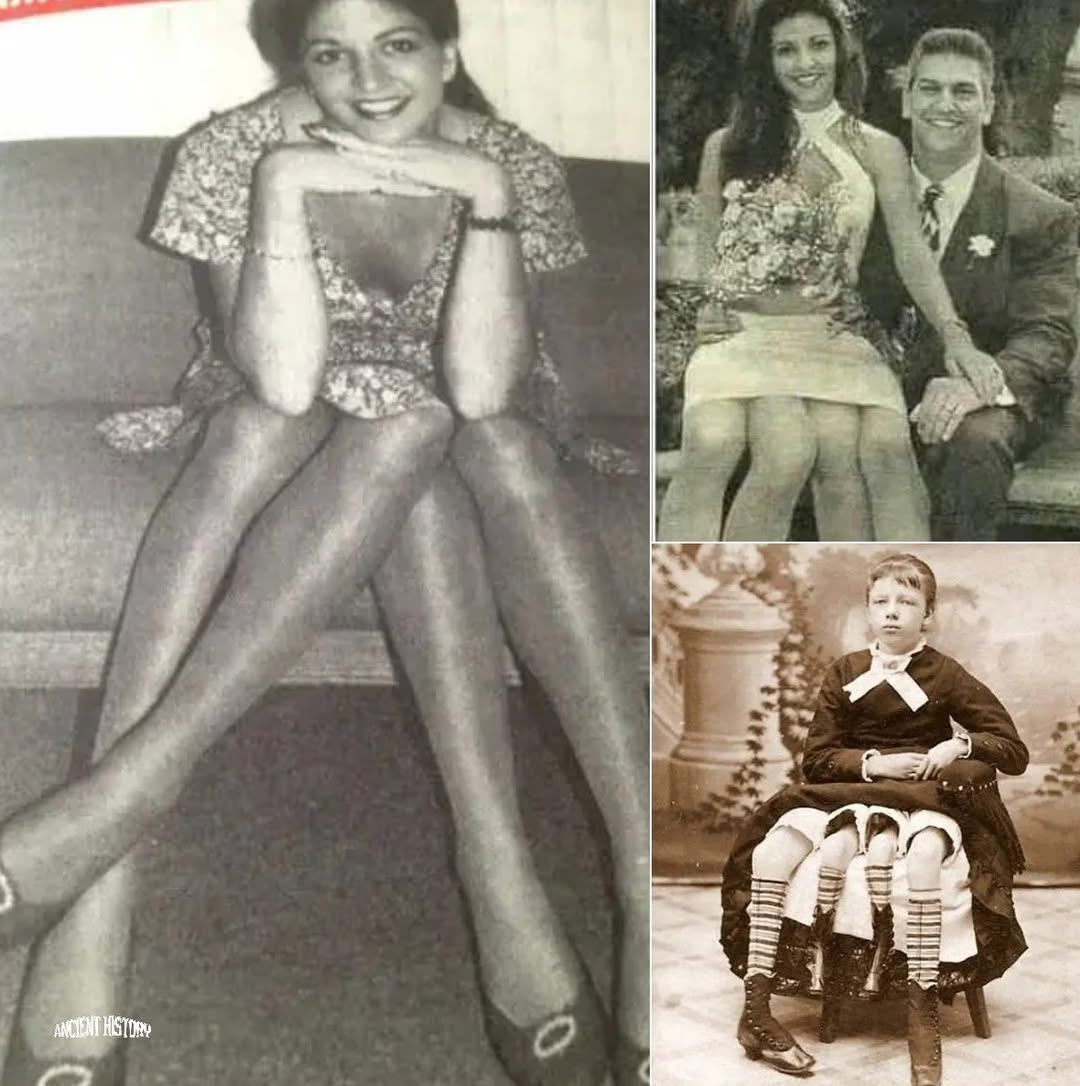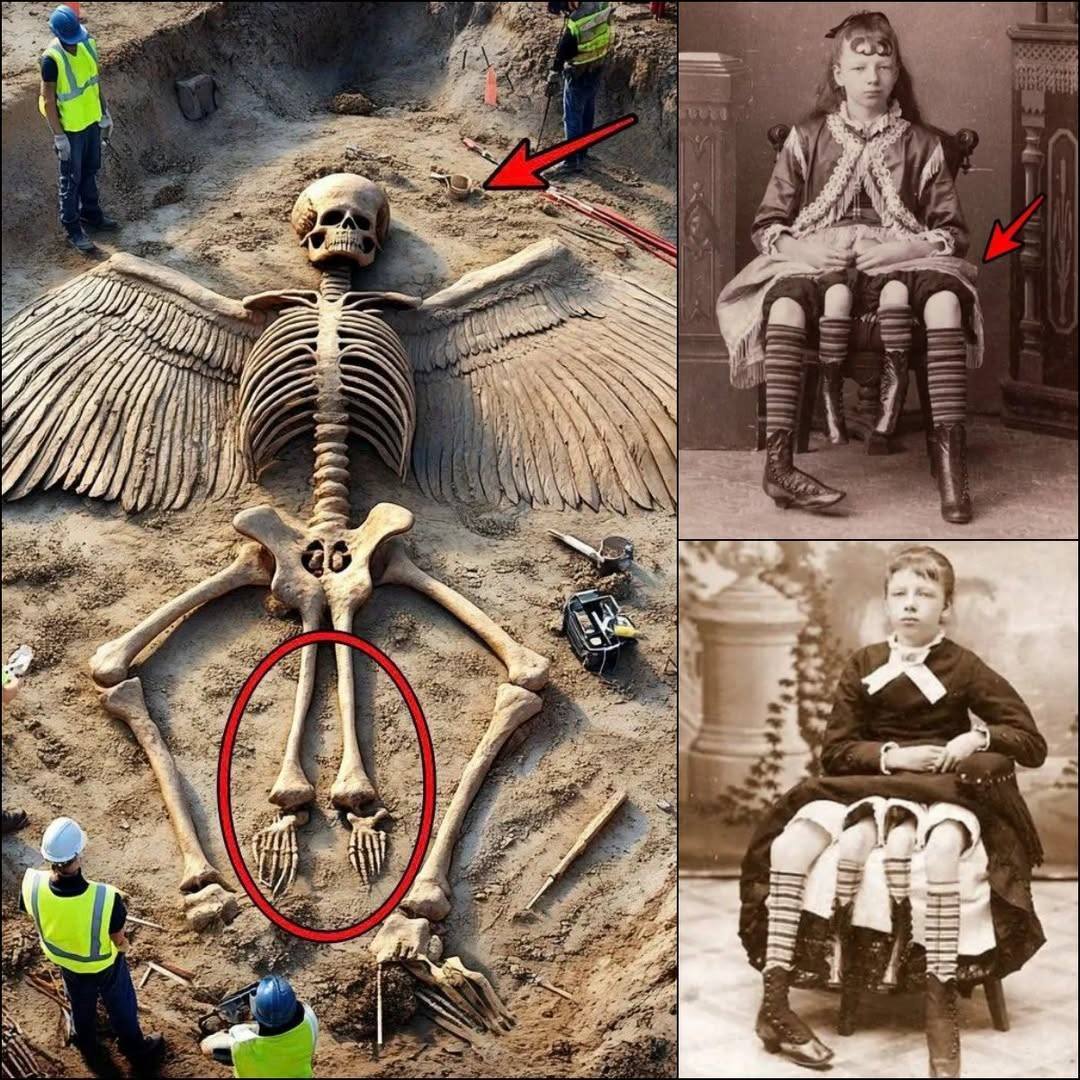Double Takes and Forgotten Limbs: The Mysterious Glitches in History’s Lens
Before Photoshop and digital editing redefined how we see the world, early photography had its own brand of magic — and mystery. In the late 19th and early 20th centuries, when cameras were both scientific instruments and artistic tools, certain photographs emerged that challenged the very nature of reality.
They depicted what seemed impossible: a woman with four legs, a child with six, couples whose limbs intertwined in anatomies that defied logic. Viewers at the time, unfamiliar with optical illusions or long-exposure quirks, were left to wonder — were these mere accidents of light, or did they capture something otherworldly?
When Reality Bends and the Lens Reveals the Unseen

Photography’s early decades were full of wonder and experimentation. The Victorian and Edwardian eras were particularly fertile ground for curiosity about the unseen. Cameras then operated slowly, requiring subjects to remain still for long periods — a setup that often produced spectral effects.
A figure moving mid-exposure might appear twice, giving rise to the illusion of “double bodies” or “extra limbs.” In portraits, overlapping shadows could transform a hand into a claw, or make one person seem to grow from another’s side. These accidents became part of the era’s visual folklore, reminders that early photographers were not only recording reality — they were bending it.
Yet, not every image can be explained away as a technical mishap. Some may reflect genuine medical conditions, poorly understood at the time. Before modern medicine could classify or treat congenital disorders, individuals with physical anomalies were often photographed as curiosities, their bodies used to illustrate the boundaries of the “normal.”
The Bizarre History of Forgotten Medical Conditions

Among the most striking cases were those of polypodia — individuals born with additional limbs — and macrodactyly, a condition that causes abnormal enlargement of fingers or toes. In an era fascinated by both science and spectacle, such people often lived between two worlds: medical subjects by day and sideshow attractions by night.
The blurred, grainy photographs we now study may not be simple photographic “glitches” at all, but rather rare attempts to document conditions no one then could explain.
Consider, too, that medical photography in the 19th century was not a purely scientific pursuit. It was a form of visual anthropology, a way of cataloging the “abnormal.” Many images once dismissed as supernatural may, in fact, preserve the only surviving evidence of people who lived on the margins of understanding — individuals erased by both medicine and memory.
A Quiet Mystery in Time’s Fading Glimpses
Every surviving image from that age holds a quiet tension between accident and intention. A double exposure might mimic possession or mutation; a misaligned plate could turn one child into two. But these mistakes also reveal something profound — the fragility of perception itself.
Was the camera lying to us? Or was it, in its cold precision, revealing truths our eyes were never meant to see?
For Victorians, such questions blurred the line between science and mysticism. The same society that invented X-rays and telegraphs also believed in séances and spiritual photography. In their eyes, the camera was not just a recorder of life — it was a potential witness to the unseen.
Even as skeptics debunked “spirit photographs” and optical illusions, the fascination endured. People saw what they wanted to see: either errors of machinery or evidence that the world was stranger than reason allowed.
Legacy of the Unseen

Today, when digital editing can conjure any fantasy in seconds, the eerie charm of these early “impossible photographs” endures. Their power lies not in their accuracy, but in their ambiguity.
Each image invites us to question what we consider real — to recognize that even the simplest photograph is shaped by light, time, and the fallibility of human perception.
Perhaps the greatest mystery these old photographs hold is not what they depict, but how they make us feel. They remind us that long before the age of pixels and filters, photography already toyed with truth. It invited us to doubt our senses and to imagine that the camera’s lens, for one fleeting instant, might have glimpsed something beyond our understanding.
In the end, these glitches in history’s lens are more than visual curiosities. They are relics of a time when the boundaries between science and myth, accident and revelation, were beautifully — and hauntingly — blurred.
Sources:
– The Metropolitan Museum of Art Archives – “Photography and the Victorian Imagination”
– The Wellcome Collection – “Medical Anomalies and Early Photography”
– The British Library – “Optical Illusion and Spirit Photography, 1840–1910”
– Smithsonian Magazine – “The Unexplained Oddities of Early Photography”
